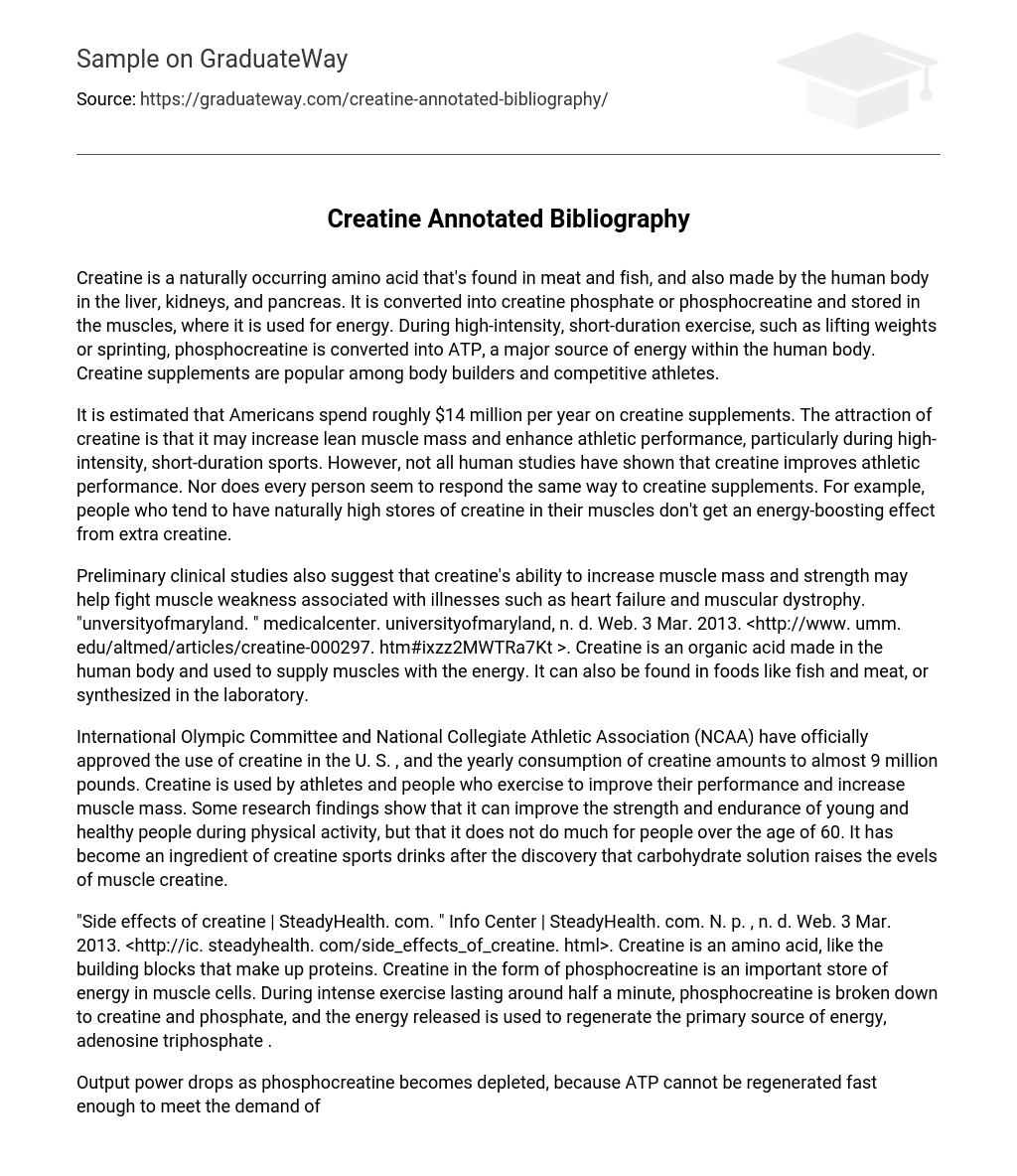Creatine is a naturally occurring amino acid that’s found in meat and fish, and also made by the human body in the liver, kidneys, and pancreas. It is converted into creatine phosphate or phosphocreatine and stored in the muscles, where it is used for energy. During high-intensity, short-duration exercise, such as lifting weights or sprinting, phosphocreatine is converted into ATP, a major source of energy within the human body. Creatine supplements are popular among body builders and competitive athletes.
It is estimated that Americans spend roughly $14 million per year on creatine supplements. The attraction of creatine is that it may increase lean muscle mass and enhance athletic performance, particularly during high-intensity, short-duration sports. However, not all human studies have shown that creatine improves athletic performance. Nor does every person seem to respond the same way to creatine supplements. For example, people who tend to have naturally high stores of creatine in their muscles don’t get an energy-boosting effect from extra creatine.
Preliminary clinical studies also suggest that creatine’s ability to increase muscle mass and strength may help fight muscle weakness associated with illnesses such as heart failure and muscular dystrophy. “unversityofmaryland. ” medicalcenter. universityofmaryland, n. d. Web. 3 Mar. 2013. <http://www. umm. edu/altmed/articles/creatine-000297. htm#ixzz2MWTRa7Kt >. Creatine is an organic acid made in the human body and used to supply muscles with the energy. It can also be found in foods like fish and meat, or synthesized in the laboratory.
International Olympic Committee and National Collegiate Athletic Association (NCAA) have officially approved the use of creatine in the U. S. , and the yearly consumption of creatine amounts to almost 9 million pounds. Creatine is used by athletes and people who exercise to improve their performance and increase muscle mass. Some research findings show that it can improve the strength and endurance of young and healthy people during physical activity, but that it does not do much for people over the age of 60. It has become an ingredient of creatine sports drinks after the discovery that carbohydrate solution raises the evels of muscle creatine.
“Side effects of creatine | SteadyHealth. com. ” Info Center | SteadyHealth. com. N. p. , n. d. Web. 3 Mar. 2013. <http://ic. steadyhealth. com/side_effects_of_creatine. html>. Creatine is an amino acid, like the building blocks that make up proteins. Creatine in the form of phosphocreatine is an important store of energy in muscle cells. During intense exercise lasting around half a minute, phosphocreatine is broken down to creatine and phosphate, and the energy released is used to regenerate the primary source of energy, adenosine triphosphate .
Output power drops as phosphocreatine becomes depleted, because ATP cannot be regenerated fast enough to meet the demand of the exercise. It follows that a bigger store of phosphocreatine in muscle should reduce fatigue during sprinting. Extra creatine in the muscle may also increase the rate of regeneration of phosphocreatine following sprints, which should mean less fatigue with repeated bursts of activity in training or in many sport competitions.





